How Proactive Unemployment Claims Management Can Combat UI Solvency Issues

In the aftermath of high unemployment fueled by the COVID-19 pandemic, many states found their unemployment insurance (UI) trust funds depleted or in dire straits. In Part 1 of this article series, we explored how UI trust funds work and how UI solvency rates are trending post-pandemic. In Part 2, we look at what these trends mean for you as an employer and how a proactive approach to unemployment claims management can offset the negative repercussions of UI trust fund solvency issues. No matter where you do business, you can benefit from these proven cost-reduction strategies.
How UI Solvency Issues Trickle Down to Employers
Any time high unemployment significantly reduces a state’s UI trust fund—during an economic downturn, a recession, or a pandemic—the state government will take measures to build its UI reserves back up so it’s positioned to continue paying claims. The most common measures include:
- Adding a surcharge to the employer’s experience rating (effectively raising the employer’s UI tax rate)
- Raising the wage base on which the UI tax is applied
- Shifting to a different tax table based on the state’s current reserve status
- Borrowing funds from the federal government or private lenders
- Reducing the unemployment benefits available to eligible claimants
- Shortening the duration of the unemployment benefit period
The first four strategies impact the amount of UI tax an employer pays, either directly (requiring the company to pay a higher UI tax rate and/or pay tax on more total wages) or indirectly (when the state passes along the cost of its loans through other means). The financial ramifications are often significant.
The situation in Connecticut is a prime example. After unprecedented unemployment during the pandemic wreaked havoc on its UI trust fund, the state increased its UI taxable wage base by 67%. Now, employers are paying UI tax on the first $25,000 in eligible wages per employee, up sharply from $15,000 in 2023. Colorado increased its UI wage base by over 16%, and many other states instituted single digit increases. Currently, the wages on which an employer pays UI taxes can range from a low of $7,000 to a high of $68,500 per employee.
Pulling the Levers You Control
Of course, as an employer you can’t control whether your state raises the UI taxable wage base, adds a UI tax surcharge, or shifts to a different tax table in calculating your rate. But you CAN control an important driver of your total UI tax paid: your experience rating. This is where proactive claims management can make a big difference in your unemployment claims costs.
The more claims you win upfront or on appeal, the lower your experience rating will be, which in turn drives down your UI tax rate. Although many organizations take their UI tax rate for granted—chalking it up as the cost of doing business—there are several proven ways to reduce that rate by improving your experience rating.
In UC Alternative’s experience helping countless organizations reduce their unemployment-related costs, the following techniques are especially effective:
- Rooting out unemployment claims fraud through rigorous auditing procedures
- Taking every step possible to reverse fraudulent or ineligible claims
- Diligently and clearly documenting the reasons for termination and the steps taken prior to discharge
- Crafting complete and compelling responses to every claim you receive from the state, which includes providing comprehensive supporting documentation
- Processing claim responses timely to avoid missing filing deadlines
- Winning more lost claims on appeal, by ensuring your staff is thoroughly prepared to testify effectively at appeal hearings
- Determining if it’s worth making voluntary UI tax contributions (NOTE: If you operate in a reserve ratio state and your ratio only slightly exceeds a given UI tax bracket, it’s possible that making a small voluntary contribution could keep you in a lower bracket and create a meaningful net tax savings.)
Techniques like these are proven to reduce an organization’s UI tax rate—often bringing it down to the lowest possible rate in the state. The savings can add up dramatically, offsetting any steps your state takes to improve UI trust fund solvency.
Consider this fictional example of a mid-sized employer in a state that raised its UI taxable wage base to shore up the trust fund. By focusing on the controllable portion of its UI tax rate and reducing that rate by a half percentage point, this employer saved $825,000 in just one year.
| 2023 | 2024 If employer took no steps to reduce its UI tax rate | 2024 If employer reduced its UI tax rate proactively | |
| Number of Employees | 5,000 | 5,000 | 5,000 |
| UI Taxable Wage Base | $30,000 | $33,000 | $33,000 |
| UI Tax Rate for This Employer | 1.5% | 1.5% | 1.0% |
| Total UI Taxes Paid | $2,250,000 | $2,475,000 | $1,650.000 |
| UI Tax Savings | $825,000 |
The Complexities of Operating Across Multiple States
If you do business in multiple states—because you have physical locations or employ remote workers—it’s even more important to take a proactive approach to unemployment claims management. That’s because each state has its own unemployment claims requirement, which can be tricky to track and comply with.
For example, states vary in their rules regarding what constitutes employee misconduct. If you use misconduct as the reason for termination, you need to be sure you don’t run afoul of those rules and can fight an ineligible claim successfully. If the claim involves a remote employee who you can’t easily “have eyes on,” the burden of proof becomes even more challenging. This is just one example of the nuances that come into play when you operate in multiple states, all of which can significantly impact your unemployment-related costs.
Trust UC Alternative to Reduce Your Unemployment Costs
No matter what happens with the economy or how unemployment rates trend, focusing on the controllable portion of your UI tax rate and unemployment claim costs can have a major impact on your bottom line. To achieve those gains, many leading employers partner with UC Alternative.
We take ownership of the unemployment claim function with the goal of reducing your UI tax rate to the lowest possible rate for your industry in your state. Our experienced team leverages their deep knowledge and expertise to help you win more claims upfront, win more lost claims on appeal, and ultimately reduce your UI tax rate. We assess where you stand relative to your peers in your state, then chart a course to improve your tax rate and reduce your total unemployment-related costs. And with a unique performance-based fee structure that ensures we’re rewarded for claims outcomes (not claims activity) we have a strong incentive to help you fight claims successfully and achieve the lowest UI tax rate possible.
Get a free unemployment claims projection and learn how we save employers up to 40% or more on their unemployment costs.





